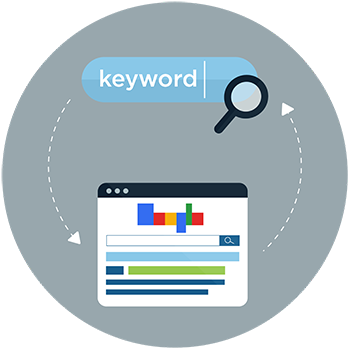Showing relevant results for a query entered by a customer increases the likelihood of a conversion, even for Amazon Ads advertisers. What results to display depends on the keywords being targeted.

(The explanation is in context to Amazon ads)
Search query is a word or combination of words entered by the user to find relevant results for. Matching up to the query helps achieve two goals:
- Give the user the information about what he is looking for
- Ensure a positive conversion action from the user, if relevant
Keywords, on the other hand, are those words that advertisers would want to match to the query entered by the user. So, they are the term(s) advertisers bid on and would want to have their ads displayed for. The keywords help with precise targeting and reaching out to customers interested in the product.
So, if your product was running shoes, you would want to show for search terms such as gym running shoes, red shoes for men, etc. For which term your ad shows depends on the choice of match types. Amazon ads offers three match types that can be assigned to these keywords, which are broad, phrase and exact match type. Currently, only plural variations of search terms are matched and not other close variants such as misspellings, synonyms or stemmed words.
So, the following will happen when each of these match types is assigned to the keyword running shoes:
| Keyword | Match Type Explanation | Search Terms |
|---|---|---|
| running shoes | will show for all search terms with both keywords present not necessarily in the same order | shoes for running, shoes in red for running, running shoes for men, long run shoes, etc. |
| “running shoes | will show for search terms with the keyword in the same order | running shoes, running shoes for men, run shoes, running shoes in red, etc. |
| [running shoes] | will only show for the search term that matches exactly the keyword | running shoes, runner shoes, etc. |
Both Headline Search Ads and Sponsored Product Ads are keywords targeted ads, whereas Product Display Ads are interest targeted.
In Sponsored Product Ads, advertisers have an option to select automatic target type or manual target type. In an automatic targeting, Amazon targets ads to the customers’ basis the product information, whereas in manual targeting the ads are displayed when the customer’s search matches the keyword that you have targeted. So, in manual you can add your keywords and assign match types (as discussed above), whereas in automatic you skip this step altogether.
While manual is a more precise form of targeting, automatic targeting leaves some gaps, as it is broader in reach and might end up showing for some irrelevant terms too. Here the role of negative keywords becomes all the more important. As you might want to display your ad for search queries that are not relevant to your business. This step will help achieve the following:
- Save your budget spent on unwanted clicks
- Improves the performance expected from automatic targeting
- Drive relevant and interested traffic to your product, hence improving the chances of conversion.
So, as much a keyword is important to reach out to the right audience, knowing what user is search for is equally important. The information about the search queries is tapped in the Search Terms report. We will soon be coming up with a post about it. So, watch out this space for more!
Note: Karooya’s negative keywords tool for Amazon Ads is a powerful tool that saves your ad budget and time. It is Free for accounts with a monthly spend of less than $3000. Learn more and sign up today to improve your ACoS.
Related Links:





Stop the wasted ad spend. Get more conversions from the same ad budget.
Our customers save over $16 Million per year on Google and Amazon Ads.